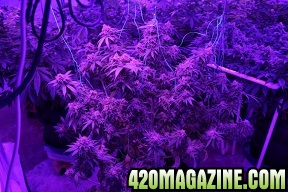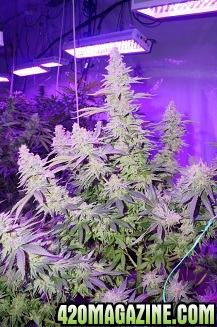Hosebomber
New Member
If the light is gonna be 2-3 inches from the light, I wouldn't use any lenses. I'm not sure where the 2 watt diodes came from, but I do not recommend 2 watt diodes in any case. I would go with 1 watt diodes if you are making the panel yourself and staying within 2-5 inches from the plant. Any grow area when the plants will be 12+ inches from the light use 3 watt diodes. If you are unaware, a 2 watt diode is two one watt diodes mounted on a single chip driven at 500mA with each diode receiving 250mA. It cost more than a 1 watt diode and produces only 13-21% more photons at the cost of double the power.






